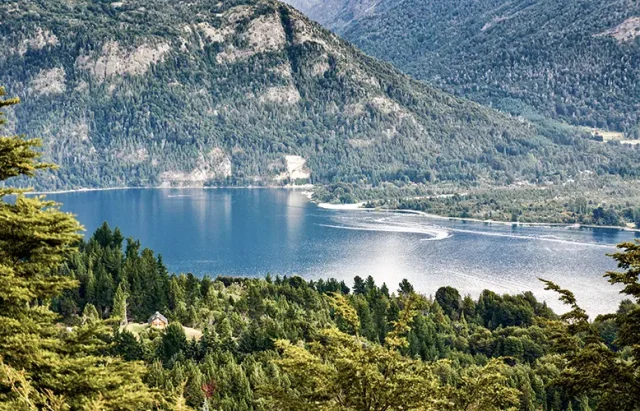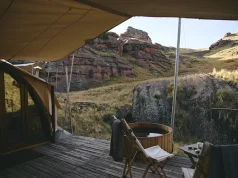
Argentina has been a very popular hunting destination for many, many years. This is due to its wide range of huntable species, fairly mild temperatures year round, and a variety of climates, geographies and habitats.
Argentina big game hunting is especially popular, considering the range of game available and sheer size of the animals. According to many hunters, Argentina offers some of the best free range red stag hunting in the world, along with some of the most intense dove and mized bag shooting you can find. With Argentina coming in as the second largest country in South America, there is no shortage of land to explore and wildlife to hunt.
History of Hunting in Argentina
People began to settle in Argentina hundreds of years ago. The original settlers were mostly from Peru, but people from Spain soon followed around the 16th century. Years after that, European settlers arrived and brought their hunting strategies along with them. They also brought more species of animals from their previous homes in the early 1900’s, putting native Argentinian species at less of a risk of over-hunting.
There are several native species that are still huntable today including brocket deer, cougar, capybara, white-lipped peccary and collared peccary. Some of the non-native species that are still hunted in Argentina today are the water buffalo, wild boar, red stag deer, fallow deer, Peré David’s deer, Axis deer, blackbuck antelope and mouflon. Modern day destination hunting as we know it in Argentina started with dove hunting, and then quickly developed into larger game hunting.
Argentina even became more lenient on dove hunting laws, especially with out of country hunters, as an attempt to keep down the dove population. This was a much more efficient way to handle the issue rather than their previous flawed plan of poisoning the doves, as this method proved to be doing more harm than good. If they had decided to move forward with posioning the doves rather than letting hunters handle the issues, the decision makers would consequently end up poisoning other species as well, which would have been uninetentional, but unavoidable.
Going on an Argentina Safari: Whats the Deal?
When discussing the idea of taking a trip to Argentina to hunt one of their coveted big game species or to experience the thrill of high volume dove shooting, there are several factors to consider.
While you need to invest a serious amount of time and research into things such as travel arrangements, taxidermy and trophy fees, and so much more, there are really three big things to consider.
What, When, and How.
The What: Species to Hunt in Argentina
Red stag hunting is very popular in Argentina as the red stag is one of the largest deer species in the world and Argentina has the best free range red stag hunting there is. Dove hunting is also extremely popular there, given the situation with the overpopulation of doves in Argentina and the encouragement the government gave for hunters to hunt the doves.
There are a few other kinds of deer frequently hunted in Argentina, including Whitetails, Fallows, Brocket and Axis deer. Blackbuck hunting is another big category in Argentinian hunting. This is a small kind of antelope, only weighing about 90 pounds, that is native to India.
The European wild boar and European Mouflon are also big hunting attractions in Argentina. A few more include the cougar, capybara, peccary, and feral goat and for some additional wingshooting there are pigeon, perdiz, and ducks.
It is no wonder Argentina is a top hunting destination with its amazing land and wildlife. According to many world traveling hunters, hunting trips to Argentina are truly an unforgettable experience. No matter what kind of hunting you are into, there is something for you in Argentina. Big game hunting, bird hunting, and fishing are all options that will leave you with memories that will last a lifetime.
The When: Argentina’s Climate and Weather
Timing can really make the difference when deciding the perfect time to book a hunting trip in Argentina. Looking a the big pictures, there are really four different periods of time to consider:
January, February & March
(U.S. Late Winter/Spring):
During this period, which aligns with late winter and spring in the United States, Argentina experiences its warmest and wettest weather. The northern regions are particularly comfortable and ripe for hunting, with average temperatures reaching 79°F.
With that being said, the climates of the southernmost parts, due to their higher altitudes, remain cooler and average around 54°F. This season also boasts longer daylight hours, providing ample hunting time.
Keep in mind that March marks the beginning of the fall season and brings increased rainfall, so plan your gear accordingly.
April, May & June
(U.S. Early Summer):
April and May signify the fall season in Argentina, boasting mild weather for hunting. Northern areas enjoy an average temperature of 72°F, while southern regions see cooler temperatures around 43°F.
June marks the beginning of the transition into Argentina’s winter season, with differeing degrees of cold in various regions across the south. Bird activity is notably high during this time, making it ideal for bird hunting.
Depending on your location, layering clothing and rain attire may be necessary.
July, August & September
(U.S. Late Summer):
July and August signal the fiona transition into Winter in Argentina, with temperatures ranging from an average of 39°F in the south to 57°F in the north.
However, by September, spring arrives, bringing milder and more favorable conditions. Northern Argentina averages around 68°F as a whole, but southern sections of the country range from 45°F to 56°F. This period provides clear skies, making it favorable for hunting, but colder weather attire is likely needed during the July and August months.
October, November & December
(U.S. Fall/Early Winter):
As spring matures, temperatures begin to rise again in Argentina, proving November to be an exceptional peiod for big game hunting and wingshooting. Northern most areas typically see an temperatures around 67°F, while more southern regions range from 45°F to 58°F. December marks the welcoming of of summer, with temperatures still being manageable.
Small, more lightweight clothing is probably best for hunting in northern Argentina during these months, while more southern regions will likely require heavier winter clothing.
Whether you prefer the warm and wet summer season or the milder, more comfortable temperatures of fall and spring, be sure to research the weather conditions specific to your chosen hunting location and make sure you pack accordingly to ensure a successful hunt!
The How: Hunting Supplies Needed
There are some essential items to bring along with you to make for a more efficient and comfortable hunting experience. You want to make sure you do your research on the weather and climate specific to the hunting area you are traveling to.
As Argentina is known for their wide range of climates from Northern to Southern ends of the country, weather may vary greatly from one part of the country to another. Bringing layers is always a good idea and a way to ensure you are prepared for a range of temperatures, especially since daytime and nighttime temperatures can be quite different.
Some recommended clothing items include lightweight waterproof boots, a camo jacket, a lightweight jacket, a wader for duck hunting, light shooting gloves, plenty of extra socks, shooting glasses or sunglasses, and shoulder pads to ease recoil and mounting strains. In addition to the glasses for eye protection, you will need ear protection as well. An earpiece can prevent damage to your hearing from the high volume shooting.
Many hunting trip packages offer the option for gun rentals, which is usually a good idea to take advantage of when traveling far distances and on airplanes. Guns in airports can be a security headache, so this is a very convenient feature of a package that will also lighten the load you have to travel with.





